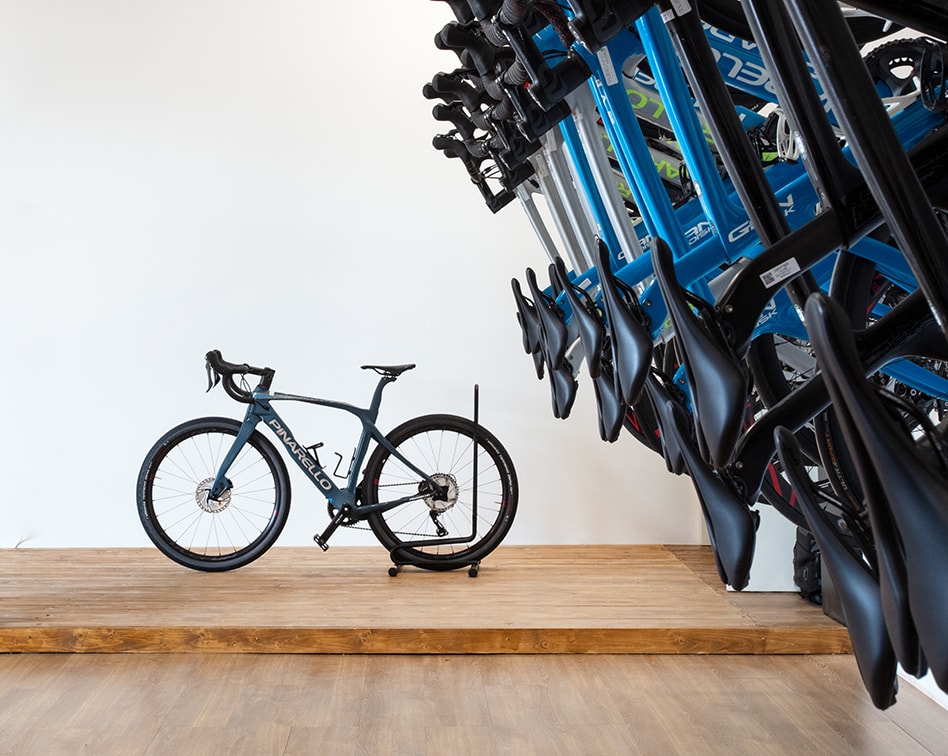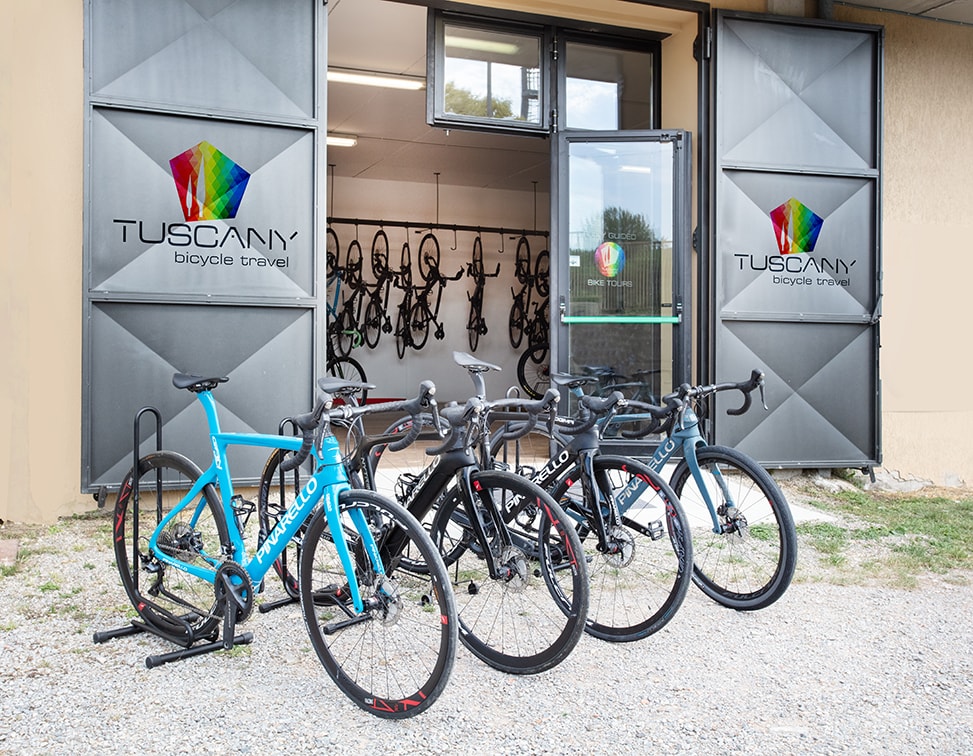16 Jul Risking the Shirt off His Back: Nani Pinarello and the Fight from Last to First.
If you’re anything like the rest of the cycling public, the Coronavirus gives you plenty of time to ride your bike. You may also have the opportunity to watch YouTube videos of the great, historic bicycle races (we recommend the U.S. Cycling Championships from 1929). We keep noticing how Campagnolo and Pinarello bikes make it to center-stage (almost every) year after year.
Pinarello is a cyclist’s paradigm for excellence in a lightweight framesets. This bike manufacturer from Treviso – along with Colnago from Milan – are the two Italian cycling design masters. And there is no better feeling then riding an Italian made bicycle on Italian roads (except, the post-ride dinner of Italian food).
But what about Pinarello makes it so interesting? For starters, its list of victories carries a long list of powerful names.
An Impressive Pedigree
Just last year Egan Bernal won the 2019 Tour de France on a Pinarello. The year before that Gerant Thomas stood on the highest step in Paris with the same bike. Chris Froome – married to Team Sky for years – brought home the 2015, 2016 and 2017 Tour de France victories. Thus, Pinarello has been the championship bicycle at cycling’s premier event for the past 5 consecutive editions of the Tour.
But Pinarello was also under Froome when he conquered the 2017 Vuelta de España and the Giro d’Italia in 2018. It carried Froome’s mentor, Sir Bradley Wiggins, to a Tour victory in 2012 and a new speed record in 2015. World Championships, as well, have been won by Cavandish in 2012 and Rui Costa in 2013 thanks to Pinarello craftsmanship.
They’re Onto Something
But Pinarello isn’t simply a bicycle of the new cycling century. Jan Ullrich raced on a Pinarello, taking home the 1997 Tour title, and battling against a famous Texas who just recently was moved to tears by the German’s present mental state. Pinarello gave Ullrich one of his greatest victories in 2000: the Olympic Road Cycling Event in Sydney.

But we could go back even further to Battaglin’s Tour win of 1981. Or possibly the consecutive top podium spots for Spain’s Indurain in 1993, 1994, and 1995.
We could even go back to the races of Nani Pinarello himself. But to study Nani deeply, we need to look at the back of the race, not the front.
Look to the Rear
A strange turn of events brought Nani Pinarello to the forefront of Italian cycling. In a true testament where, “the last will be first,” Giovanni Pinarello made a name for himself by finishing dead last in the 1951 edition of the Giro d’Italia.
Giovanni Pinarello raced bicycles during the 40s and 50s. As the eighth child in twelve, he took to cycling in the aftermath of WWII, winning over 60 races. This was the period of the famous “eroica” rivalries: namely, the famous duels among legendary riders such as Coppi, Bartali, and Bobet. These were races impossible to finish let alone win. Yet in 1951 he gained a curious notoriety – not for winning races, but for his insatiable quest for the illusive “maglia nera.”
The Black Jersey
The Maglia Nera was a black jersey, issued by the Giro organizers to the last cyclist of the famous Italian race. Conceptualized between 1946 and 1951, this special jersey went to whichever cyclist was able to cross the finish line in the very final spot, within the official time constraints. During these years, arriving last wasn’t considered shameful, but mastery. There were cases of pros hanging out in bars, hiding behind trees and even puncturing their own tires on purpose simply to lose time. There were many more unique methods to delay their finish, but the objective was not to be caught “stalling” – it had to appear natural. Nani Pinarello succeeded in winning the Maglia Nera in 1951, in the last year of the jersey’s appearance.
From the Back to the Front
In 1952, he left his team to make room for Pasqualino Fornara (just fired from Coppi’s Bianchi team). With 100,000 lire in his pocket – a heavy sum for that time – he opened Cicli Pinarello in 1953. For many years, Pinarello toyed with varying designs, working with popular steel Columbus tubing, creating parallel lines between head and seat tubes. This engineering foresight gained Pinarello victories during the 60s and 70s.
They were small achievements in local races. But by the 80s the engineering team got serious. They improved their design and performance, and experienced massive success with a team called Reynolds (later to be named Banesto) and their chief cyclist Miguel Indurain.
And Side to Side
By the 2000s, the Pinarello scientists were onto something. Where most bicycle frames are symmetrical left-to-right (thanks to round tubes), Nanni and his team made asymmetrical bike frames.

The concept behind the popular Dogma is a perfect example. Researchers considered how a bicycle’s drive-side puts asymmetrical force on the frame with each pedal stroke. Pinarello tweaked the frame, redesigning the length of the bicycle as well. They created a light frame with an incredible potential for energy conservation. Tests by Pinarello proved this asymmetrical design to be as resistant to impact as any other modern symmetrical frame.
But the difference is in the feel and the look.
Italian By Design
A cyclist senses dramatic changes in acceleration with each pedal turn. Mechanical force is dispersed into the bottom-bracket and asymmetrical chain stays. The entire frame becomes a conduit for speed and energy transference. The asymmetrical design plays a part, but so does Pinarello’s choice of carbon fiber. The T600 carbon composite is rigid while offering a certain degree of flexibility. This is a high-strength carbon that won’t let you down when you need it.
GAN: High-Level Technology for Daily Riders
You can see Pinarello’s Dogma 8 influence everywhere in the GAN Disk. The basic shaping and geometry is practically the same. You can see it in the extended head tube, how the fork crown nestles in a notch on the down tube, and in the shorter seat stays. This shaping assists the bike’s stiffness and comfortability. By shortening the front-to-rear profile of the down and seat tubes (what Pinarello calls a “FlatBack” profile) the carbon fibers release vertical give. And that’s good. You want there to be some up-and-down movement on your bicycle, not side-to-side wiggle.
Frankly, this bicycle, paired with hydraulic disk brakes that are de rigueur in the bike industry, makes for the quintessential road experience. The GAN disc coupled with the roads Tuscany Bicycle offers on many of its trips is north of paradise.
Not all Bikes are created the same.
Some people will tell you that a bicycle is a bicycle. If its got two wheels and pedals, is is something to ride over the hills.
Not in this case.
With the Pinarello GAN, you can expect an amazing ride. The acceleration, climbing and power within the frame are impressive features considering its light weight. Tight cornering and responsive descending are to be expected from a frame engineered to work with itself. It doesn’t leave the harshness that other oversized frames often do. Plus, each pedal stroke puts less strain on the carbon fibers, giving a longer life to the frame. Besides, a ride on a Pinarello is more than a “bike ride.” You’re riding a piece of history. From the last in the Giro d’Italia comes the first name in Italian bicycle design. Get yourself on a GAN and come see what we feel.
Ready to bike the Tuscan Strade Bianche on your own rented GAN? Get in touch with us today to see what sizes we have available.




No Comments